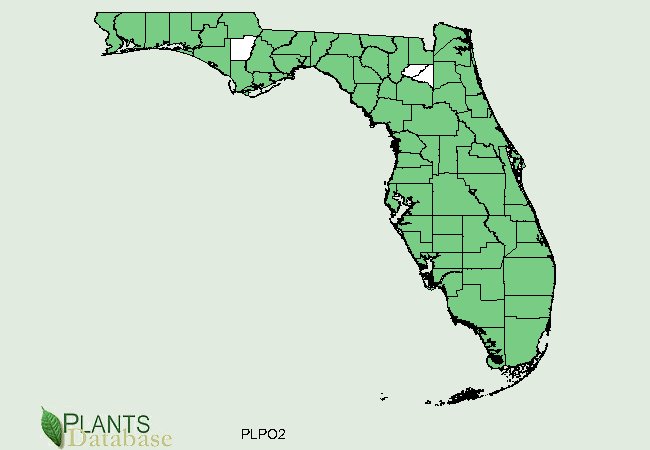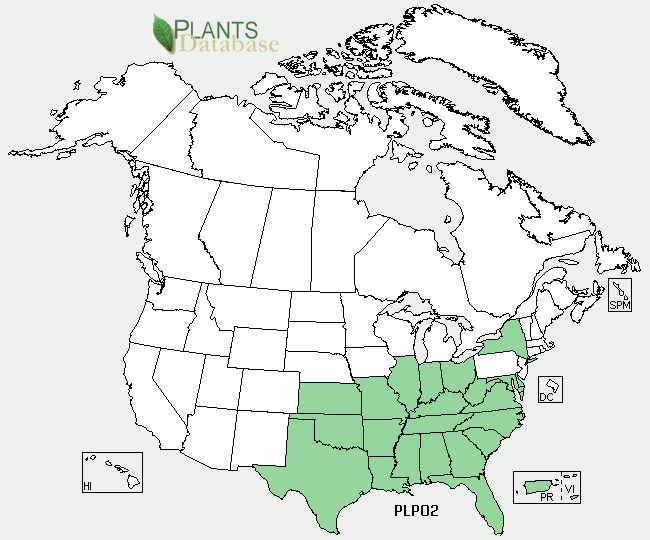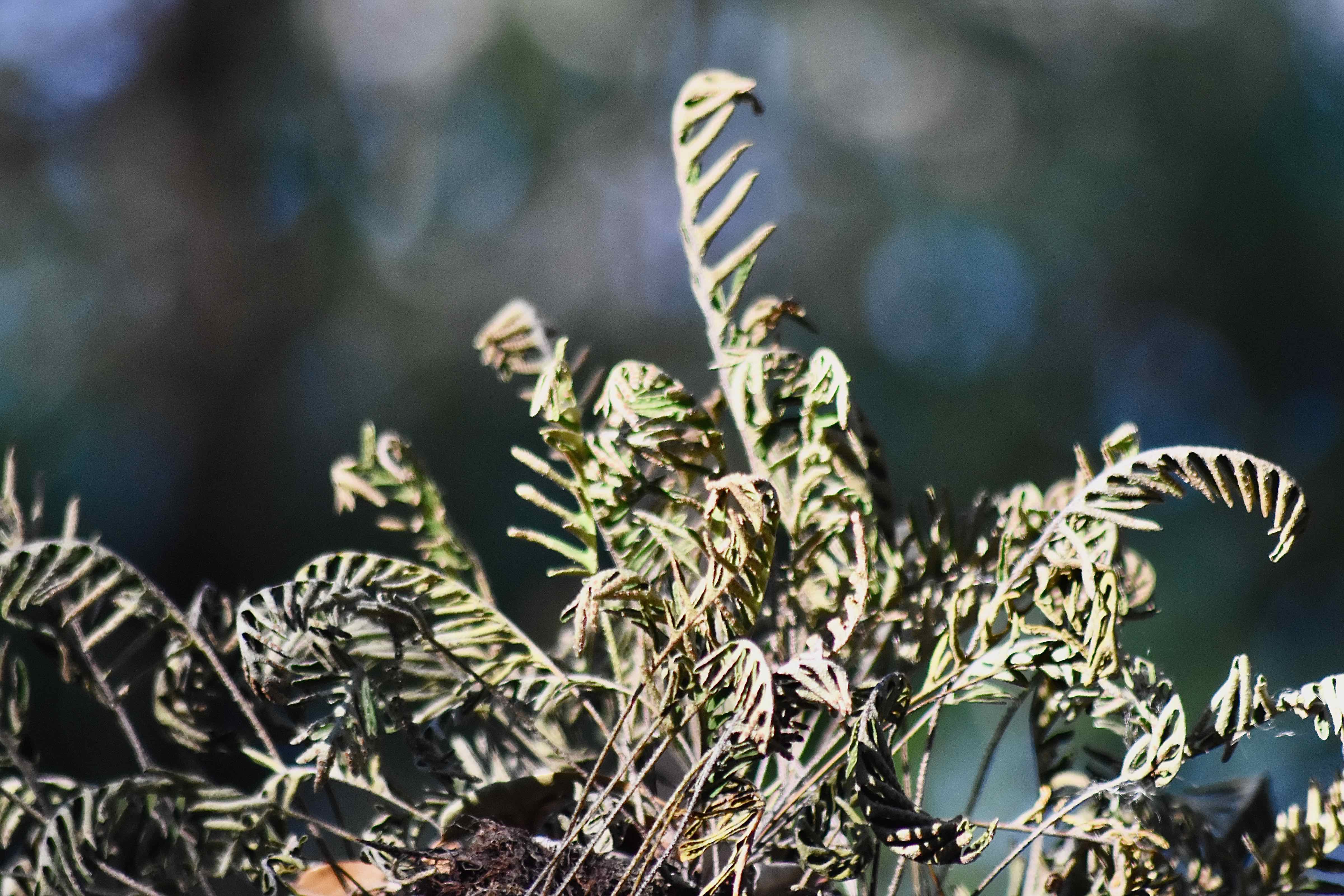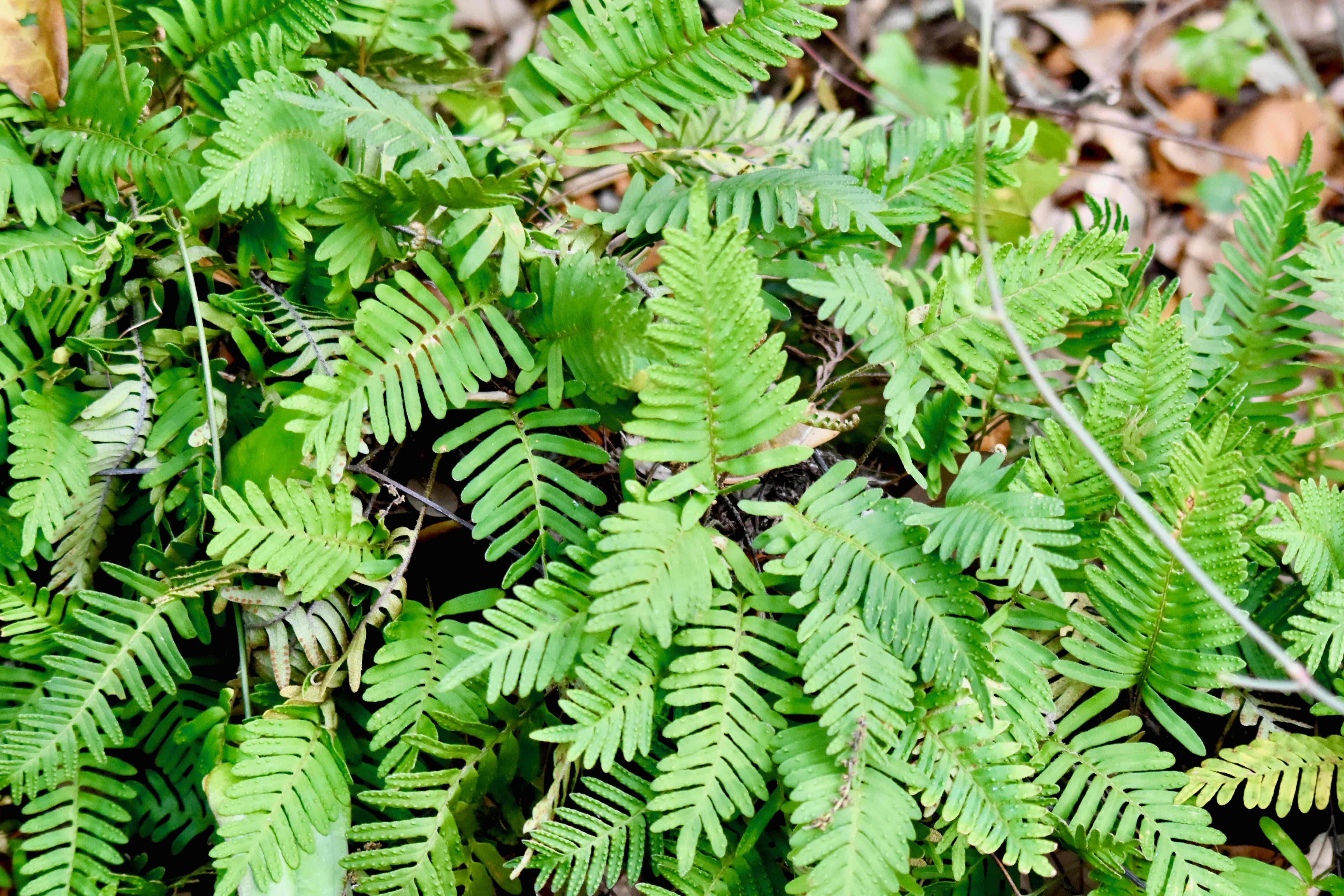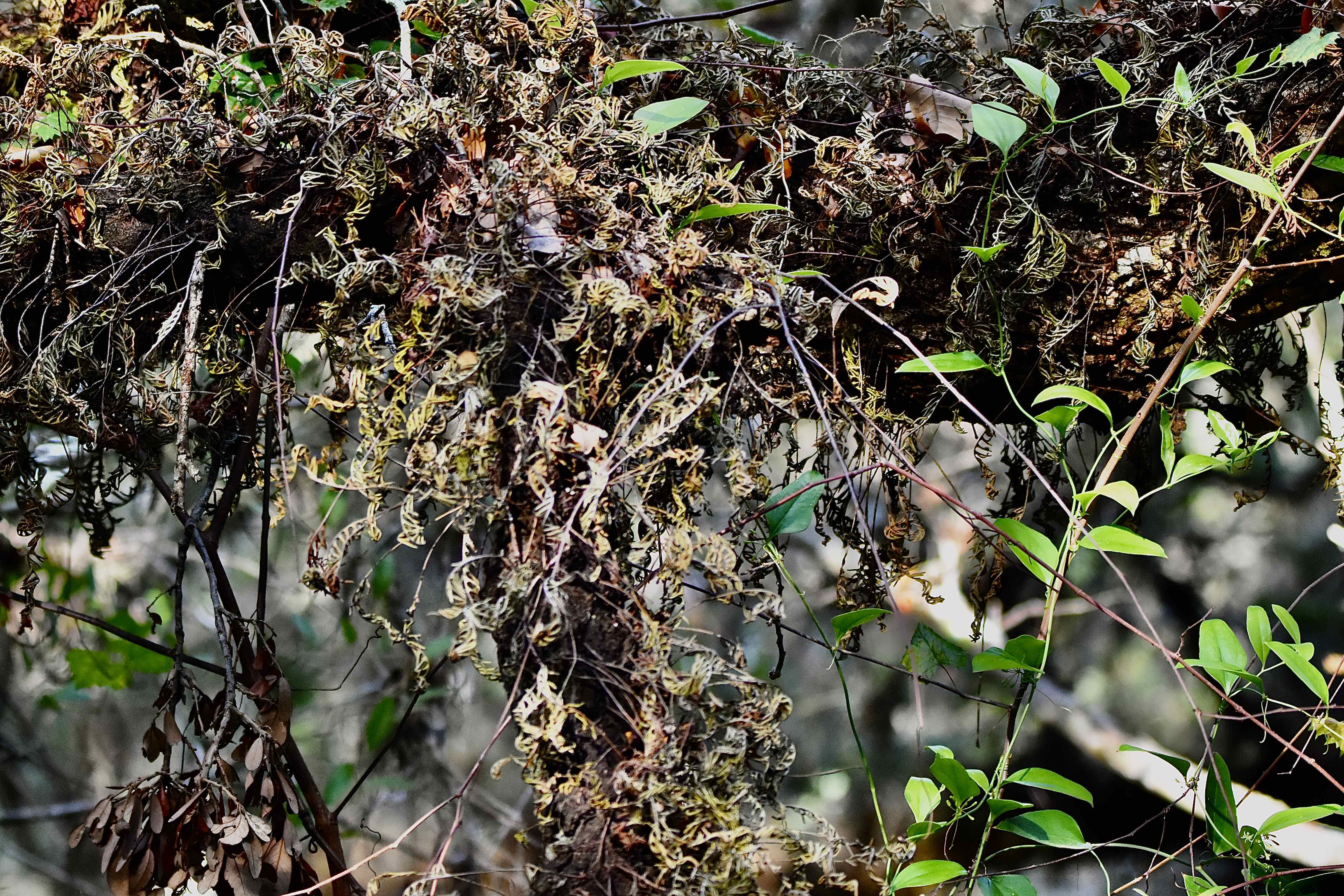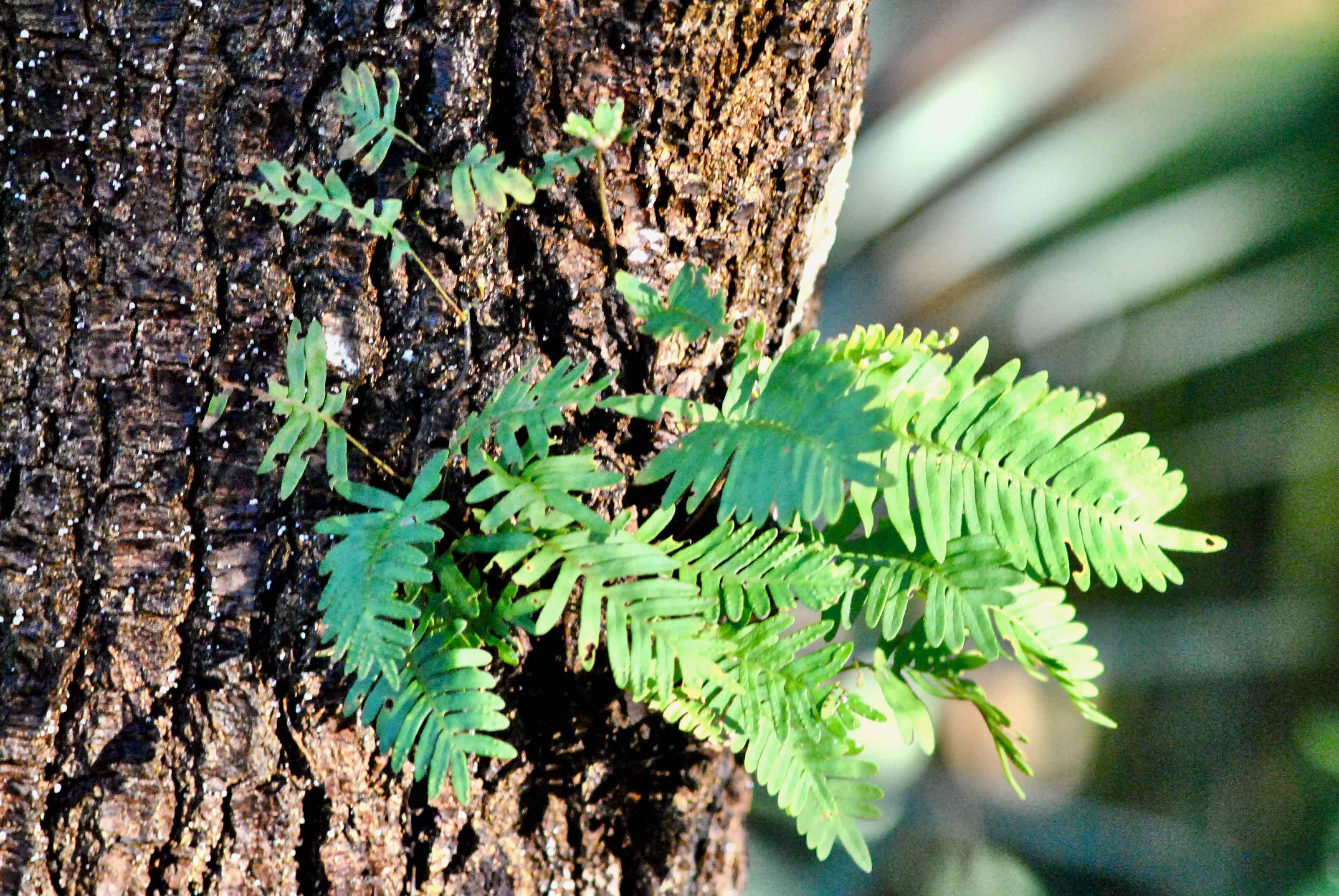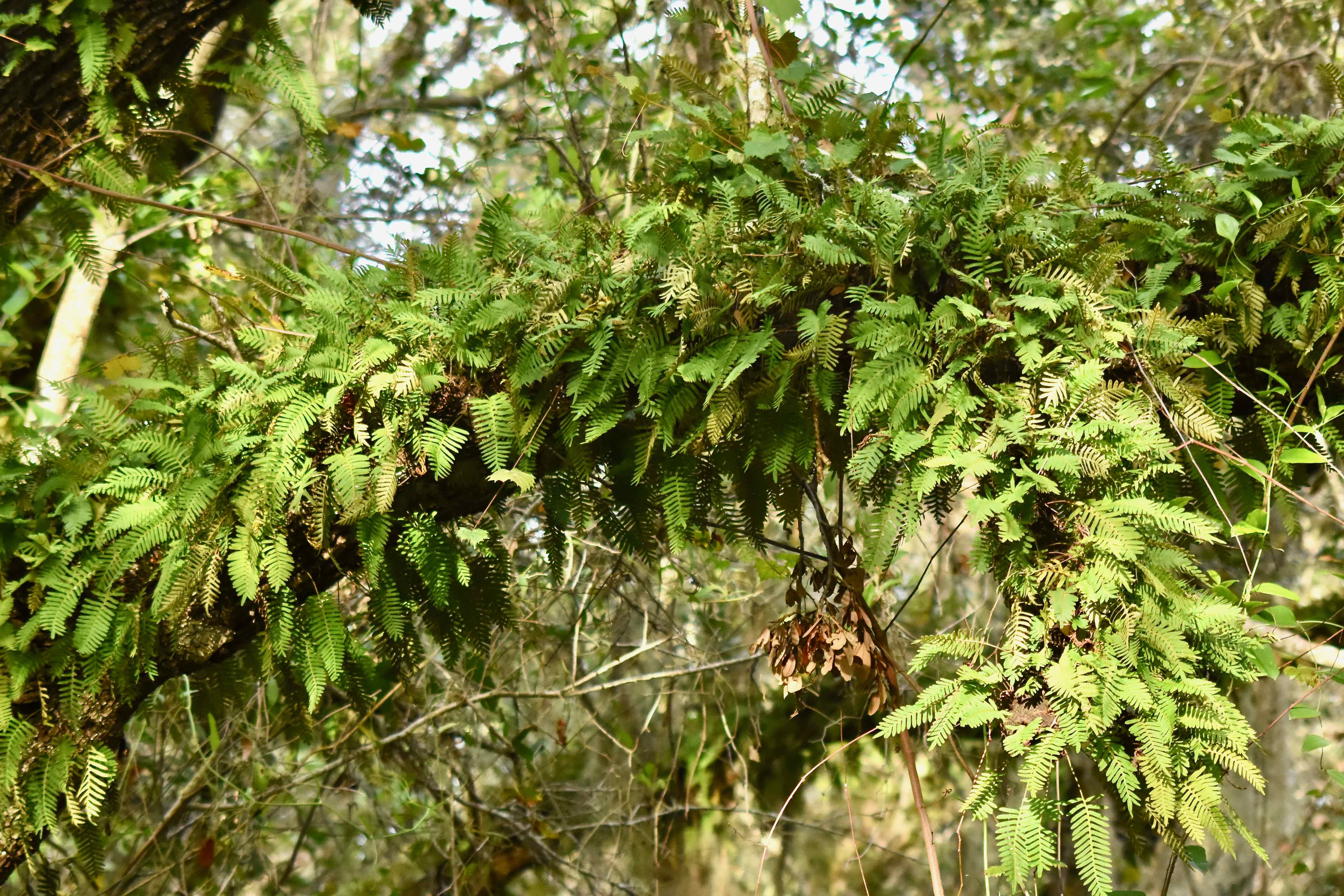
Resurrection fern, photographed at Delray Oaks Natural Area, Delray Beach, Palm Beach County, in March 2017.
Not many plants can come back from the dead. Once dead they tend to stay dead. But they don't call resurrection fern resurrection fern for nothing. It can come back from the great beyond.
Well, sort of.
This fern, known to the science world as Pleopeltis polypodiodes, will turn from verdant green when conditions are wet to shriveled-up brown in times of drought, giving the appearance that it's dead. Most plants that dry-looking would be dead, but a little rain and resurrection fern lives up to its name. The vibrancy returns.
Resurrection fern is an epiphyte, or air plant, meaning it attaches itself to a host, commonly in South Florida a live oak tree, for structure, taking in nutrients and moisture through the air or whatever it can glean from the outside of the the host's bark. It is not a parasite. It does no harm to the host whatsoever.
Resurrection fern is a Florida native and common throughout the state and as far north as New York and as far west as Texas. Its range extends through the Caribbean, Mexico, Central America and parts of South America. It is considered the most widespread of all epiphytic ferns.
In times of drought, the plant will curl its bottom fronds upward, allowing them to catch moisture and rehydrate the plant quickly when rain does come. Resurrection ferns can lose as much as 97 percent of their water content and remain alive. By contrast, many plants will be pronounced dead if they lose as little as 10 percent of their water content.
So what accounts for resurrection fern's Lazuras-like act? In times of drought, the plant is able to produce a type of protein called dehydrins that attract water. In most plants, the lack of water would cause cells to collapse on themselves, tearing, fragmenting and eventually dying. The presence of dehydrins enable resurrection fern's cells to maintain their natural shape and stay alive instead.
And resurrection fern goes into drought mode rapidly, then back to green just as fast. The top photo on this page and the top left photo below were shot at the same spot on a live oak tree at Delray Oaks Natural Area about a day or two apart. Vibrant green to deathly brown in a matter of a couple of days.
Live oak is a favorite host for resurrection fern — we've seen trees almost entirely covered by the fern — but it is not picky in finding a suitable substrate. Elms, magnolias, fence posts, the sides of buildings and even rocks will do. We've seen it growing on logs and sticks amid leaf litter. Again, it's using the substrate only as something to hold onto. It likes moist, shady habitats, but can grow in a variety of places because of its drought-tolerant abilities.
It is a small fern, growing to about six inches, nine inches tops. It produces rhizomes, or stems that help it spread, but like all ferns it reproduces via spores.
As you might expect, the ability of resurrection fern to withstand extreme drought has caught the attention of scientists for a variety of reasons, including medical and botanical. It's been used in traditional medicine to treat cuts, aches and coughs. In Cuba, it's been used to treat liver ailments. Resurrection plants generally have been studied for their antibacterial, anticancer, antifungal, and antiviral properties as well as for cosmetic uses, but we found nothing specifically on resurrection fern.
Resurection fern is a member of Polypodiaceae, a family of mostly epiphytic ferns. Other common names include miracle fern.
Delray Oaks Natural Area
Click on photo for larger image
U.S. Department of Agriculture Distribution Maps
